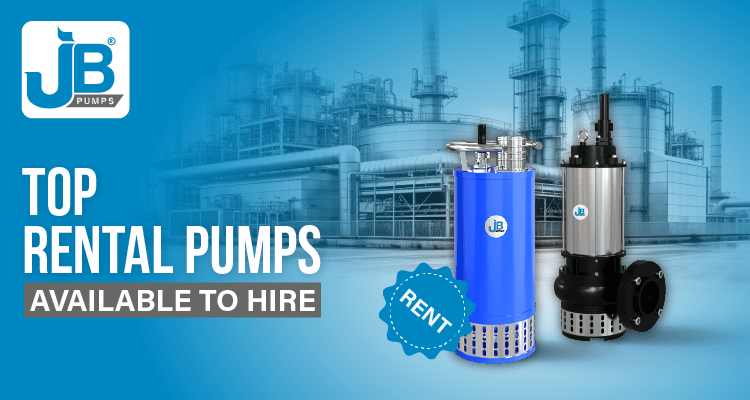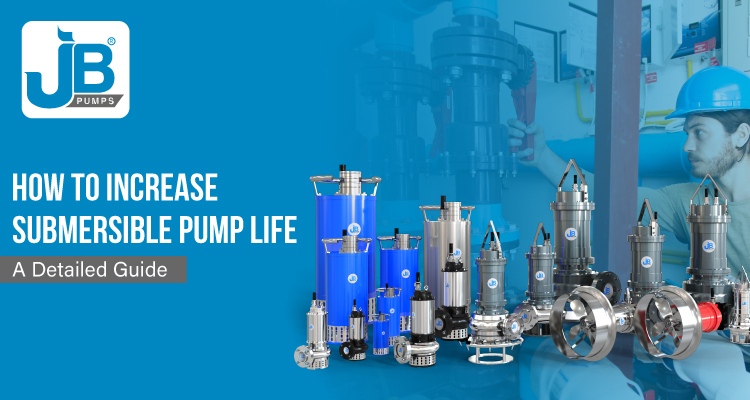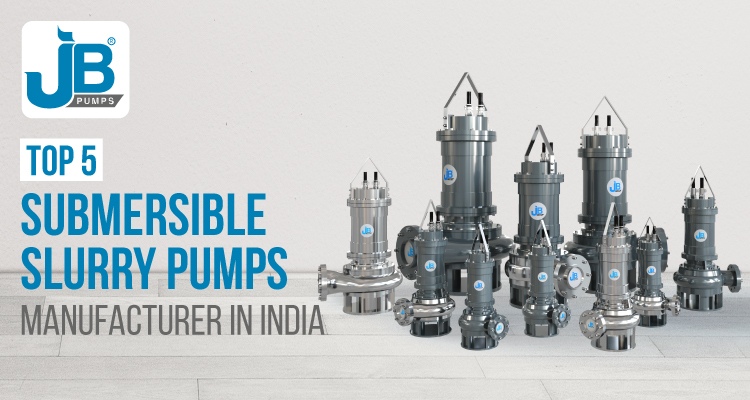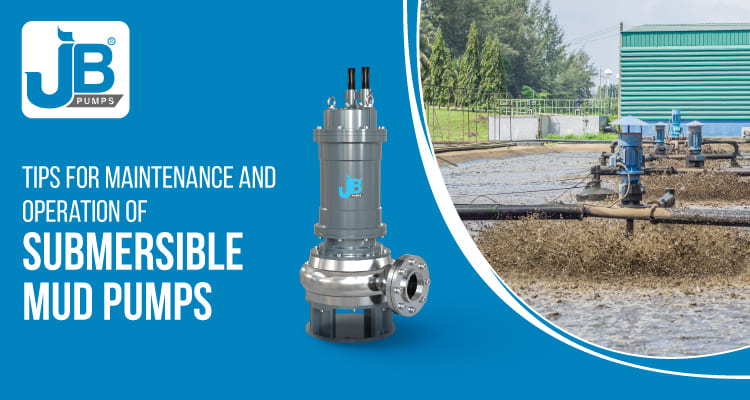
Submersible mud pumps have diverse application uses in various industries. They remove sludge, mud, and other debris from excavation sites and underground areas.
To ensure the optimal performance and longevity of these pumps, it is essential to follow proper maintenance and operation practices.
This blog will provide valuable tips and guidelines for the maintenance and operation of submersible mud pumps, covering their applications, selection guide, troubleshooting common issues, and everything else that will bless your submersible mud pump with more effectiveness and sustainability.
Help your applications with this guide, read it to the last.
What are Submersible Mud Pumps?
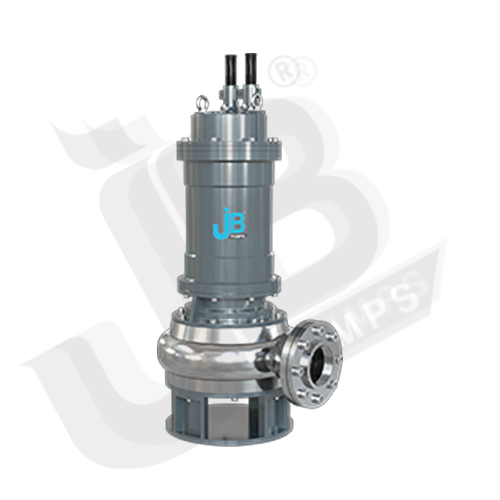
Submersible Mud Pump is an electric pump manufactured to function when fully submerged in mud, drainage, and water.
Submersible mud pumps are specialized pumps designed to handle thick and abrasive mud, slurry, or wastewater that can clog or damage other pumping chambers.
Unlike their surface counterparts, submersible mud pumps are submerged in the fluid they are pumping, allowing for efficient and reliable operation even in challenging environments.
Submersible mud pumps are proven more efficient in handling solids than any other pumps handling liquids. These pumps do not require priming as they are already submerged in the water - this is one of the major benefits of submersible mud pumps.
Submersible Mud Pump Applications
Submersible mud pumps are commonly used in several industries. These pumps are specifically designed to operate underwater, making them highly versatile and suitable for a wide range of applications.
Highlighting some modern applications in which submersible mud pumps are used:
-
1. Dredging
When it comes to dredging and excavation projects, submersible pumps are the go-to solution. These pumps can handle any job, from clearing waterways to removing sediment from a pond, lakes, rivers, or oceans. They excel in pumping and transferring large volumes of slurry and sediments, sand dredging, land reclamation, flood prevention, port construction, and desilting. -
2. Mining
Mining operations often encounter challenging conditions, including excessive water accumulation. The consistent performance of submersible mud pumps helps in dewatering, deep well dewatering, mud and muck pumping, and froth flotation. These pumps help to maintain safe working conditions in the mining industry and prevent costly disruptions. -
3. Construction Sites
Construction sites are often plagued by unwanted water accumulation, hindering processes. Submersible mud pumps come to the rescue by efficiently draining and dewatering construction sites, with their ability to handle large water volumes. They keep construction projects on track by stabilizing the ground. -
4. Wastewater Treatment
Wastewater treatment facilities rely on submersible mud pumps to tackle the complex job of filtration. These pumps play a vital role in processes like sedimentation, aeration, and backwashing, ensuring the effective treatment of water. Submersible mud pumps keep wastewater treatment systems running smoothly and ensure clean and safe water for various uses. -
5. Oil and Gas
The oil and gas industry widely uses submersible mud pumps, particularly for offshore drilling operations. Submersible pumps in the oil and gas industry are used to remove excess mud, cuttings, and debris from wellbores, ensuring smooth drilling operations. Without the help of these pumps, drilling operations of oil and gas industries would be messier and less efficient than they already are.
Besides these applications, submersible mud pumps also serve their benefits in the agriculture industry for irrigation and environmental remediation.
Effective Submersible Mud Pump Selection
Submersible mud pumps offer the most reliable solutions for various industrial applications. It is therefore necessary to select a pump that can meet the needs of those challenging needs.
All the submersible mud pumps work on the same principle and same mechanism, but the usage and purpose of using them may ask for different designs.
Depending on their use and purpose, it is crucial to make the right decision and choose a pump that will top its duty in a particular application. You can consider the following factors while selecting a submersible mud pump.
These factors will help you to know what your application will require while its operation, such as considering the discharge height and rate, pumping distance, a sensibility of liquid to be transferred, etc.
- Pump Size
- Suction Depth
- Liquid Characteristics
- Construction Materials
- Liquid Composition
Maintenance Practices of Submersible Mud Pumps
To keep your pumps in good working condition, their maintenance is essential. Time-to-time repair and regular inspection improve the efficiency of submersible mud pumps while increasing their operational life.
Here is the maintenance checklist for submersible mud pumps for daily, weekly, and monthly maintenance.
- Daily Maintenance Tips
- Check for leaks in the pump’s exterior
- Inspect the power cable for any damage
- Listen if there are any strange noises or vibrations
- Make sure the pump is properly ventilated - Weekly Maintenance Tips
- Keep the pump and nearby area clean to avoid debris
- Inspect shaft pump alignment
- Check the wear rings
- Check the bearings' temperature - Monthly Maintenance Tips
- Perform a complete disassembly and inspection of the pump
- Replace worn or damaged parts
- Check if the pump’s operation is proper
- Inspect the impeller
Operational Guidelines for Submersible Mud Pumps
These are general operational guidelines for any submersible mud pump for its effective and smooth operation.
- Pre-operation Inspection
Before operating the submersible mud pump, conduct a thorough pre-operational inspection to ensure that the pump is in good working condition and will function safely. Inspect the pump for any visual damage, check the electricity, and its oil level, and inspect its impeller for the best pumping solutions.
- Proper Installation
Install a submersible mud pump in a vertical position with the discharge line directed upwards. Make sure that the pump is properly grounded to prevent electrical shock. Connect the pump to the power source that is capable of supplying the required voltage and amperage.
- Starting and Stopping Procedures
To start the pump, turn on the power switch and open the discharge valve. Perform opposites to stop the pump. Make sure you don’t start the pump without the presence of water in suction and don’t stop it while it’s under pressure.
- Monitoring and Adjustment
The submersible mud pump should be monitored regularly for proper operation. The flow rate, pressure, and motor temperature should be checked regularly to prevent any disruptions. Adjust the pump as necessary to maintain the designed flow rate and pressure.
- Safety Precautions
The safe operation of a submersible mud pump is important to secure the working environment. When operating the pump, wear appropriate personal protective equipment(PPE) and ensure a safe distance from the pump. Do not operate the pump in a hazardous environment.
- Handle with Care
Handle the pump with care to avoid any kind of damage. Make sure to store a pump in a dry and clean place. Do not drop the pump or subject it to shock or vibration.
- Avoid Dry Running
Operating a pump without water can create damage. Do not ever run the pump in dry. Avoid ry running to avoid the hazards.
Troubleshoot Common Issues in Submersible Mud Pumps
Facing minor issues in the submersible mud pumps is not a matter of concern as those common issues can be resolved on your own. In case of any serious damage, consult the expert.
Some of the common issues in submersible mud pumps are:
- Pump not starting - Check the power supply, inspect the circuit breaker, and examine the power cable
- Reduced flow rate or pressure - Check the suction inlet and discharge line, or inspect the impeller
- Excessive Noise or vibration - Check the operating conditions of the pump
- Pump overheating- Ensure the sufficient water level and check for any obstructions in the suction or discharge line
Non-disruptive Solutions by JB Pumps!
To tackle the challenging conditions is a duty of Submersible Mud Pumps. Choosing an effective submersible mud pump that provides optimal performance and peak efficiency is a win at the game. We, JB Pumps are a leading manufacturer of submersible pumps including mud pumps, delivering the best support and solution for your toughest industrial applications. Experience the non-disruptive pumping solution with our Submersible Mud Pumps!

